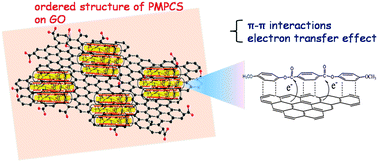Chemical modification of graphene with a thermotropic liquid crystalline polymer and its reinforcement effect in the polymer matrix†
Abstract
In our work, graphene oxide (GO) was covalently functionalized with

* Corresponding authors
a
State Key Laboratory of Molecular Engineering of Polymers, Department of Macromolecular Science, Laboratory of Advanced Materials, Fudan University, Shanghai 200433, China
E-mail:
peiyiwu@fudan.edu.cn, huitang@fudan.edu.cn
In our work, graphene oxide (GO) was covalently functionalized with

 Please wait while we load your content...
Something went wrong. Try again?
Please wait while we load your content...
Something went wrong. Try again?
Y. Jing, H. Tang, G. Yu and P. Wu, Polym. Chem., 2013, 4, 2598 DOI: 10.1039/C3PY00126A
To request permission to reproduce material from this article, please go to the Copyright Clearance Center request page.
If you are an author contributing to an RSC publication, you do not need to request permission provided correct acknowledgement is given.
If you are the author of this article, you do not need to request permission to reproduce figures and diagrams provided correct acknowledgement is given. If you want to reproduce the whole article in a third-party publication (excluding your thesis/dissertation for which permission is not required) please go to the Copyright Clearance Center request page.
Read more about how to correctly acknowledge RSC content.
 Fetching data from CrossRef.
Fetching data from CrossRef.
This may take some time to load.
Loading related content
